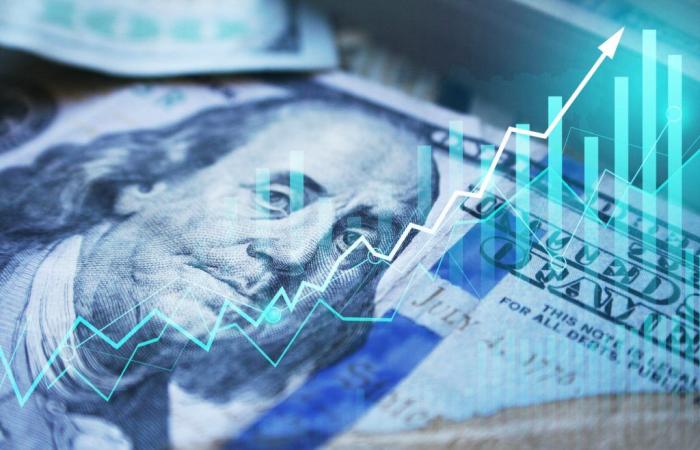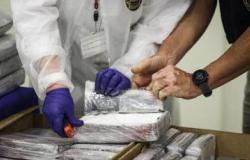On Friday (27), the dollar closed the day selling at R$5.116, down R$0.046 (-0.89%), the lowest value in 15 days. However, despite the fall, the American currency accumulates an increase of 2.01% in April and 5.42% in 2024.
Yesterday, the result of the price-spending index (PCE) in the US in March, as expected, caused a slight fall in long-term Treasury rates, opening space for a recovery in emerging currencies.
According to Diego Costa, head of exchange for the north and northeast of B&T Câmbio, the Brazilian foreign exchange market had a volatile week, with the dollar fluctuating between R$5.2181 (maximum on Monday) and R$5.1085 (minimum on Friday).
“On Monday, the market was still feeling the effects of the previous week’s news, while investors were preparing for the intense agenda from Wednesday onwards, which included the release of inflation indicators in Brazil and the United States, in addition to of American GDP”, explains Costa.
Here, after the tense week surrounding the review of the fiscal target, the local political scene appeared calmer on Wednesday, with the rapprochement between the Government and Congress. President Lula emphasized the importance of a good relationship between the powers for the advancement of fiscal agendas.
At the opening of Thursday, the dollar rose driven by the rise in the core PCE, an important indicator for inflation and the definition of the Fed’s monetary policy. “On the other hand, with the slowdown in US GDP in the last quarter, the gain of the dollar was limited, also because the market was already pricing in the possibility of higher interest rates in the country”, says Costa.
To close the week, the quarterly PCE in the United States did not show a slowdown, but remained in line with consensus, while the IPCA-15 in Brazil fell more than expected, raising sentiment on the stock markets and in the exchange rate, with the currency reaching the lowest level of the week.
What led to the dollar’s rise in recent months?
For Luiz Felipe Bazzo, CEO of transferbank, the dollar surge in recent weeks it has happened after data from the American economy did not show a slowdown in the economic situation, which indicates a postponement in the interest rate cut by the Federal Reserve.
“Such economic data released came in above expectations, which made the market start to recalculate when the Fed should start reducing interest rates in the US. With the economy still accelerating there, the chances of cuts in June or July decrease”, comments Bazzo.
“The trade balance is favorable, with a surplus of ore and soybeans. So, what weighs most on the dollar is the issue of American interest rates. Brazilian data, with the exception of the fiscal framework, is good and serves to hold back the rise of the US currency against the real”, adds the analyst.
Foreigners continue to reduce long positions in foreign exchange derivatives
Operators are also noticing technical movements for the rollover of positions in the futures segment at the turn of the month and the dispute for the formation of the last ptax rate for April next Tuesday, 30th. The main thermometer of the appetite for business, the dollar futures contract for May there was strong turnover, above US$ 17 billion. Foreigners continue to reduce long positions in foreign exchange derivatives (dollar futures, mini contracts, exchange coupons and swaps), which surpassed US$70 billion last week, a new historical peak.
The repeated statements by the president of the Central Bank, Roberto Campos Neto, that he will not intervene in the exchange rate to mitigate the rise in the dollar caused by changes in fundamentals – in this case, the repricing of American interest rates – took the wind out of speculative movements around the American currency .
“With reduced stress abroad, there is no justification for maintaining such a large stock of long positions, because the cost is no longer viable. They are taking the opportunity to make profits this week and invest again on the Stock Exchange, which has securities with interesting prices”, says the exchange manager at Treviso Corretora, Reginaldo Galhardo.
Outside, the DXY index once again surpassed 106,000 points at the day’s highs, mainly due to gains of more than 1% in the American currency against the yen, reaching its highest value since 1990. But the dollar fell in comparison with the main emerging currencies similar to the real (with the exception of the Chilean peso). Latin American currencies recovered this week, reducing losses in April, with the real showing the best performance in recent days.
“Although the DXY maintained some stability during the week at a high level this year, we saw a reduction in stress on the exchange rate, with a certain correction of last week’s exaggeration. But there is no change in structural vectors”, says the chief economist at Armor Capital, Andrea Damico, who does not see additional relief for the real from now on, since the picture is still of a strong dollar in the world. “We are very glued to the external scenario, whether or not the Fed will cut interest rates.”
What to expect from the dollar next week?
Next week, we will have an interest rate decision in the United States, which could increase caution in the markets and lead to a correction in the dollar.
According to Costa, despite the risks, a significant appreciation of the dollar is not expected. “The market has already incorporated the risks of higher interest rates, and the currency should, for now, in the absence of major geopolitical surprises or in these indicators, remain between R$5.10 and R$5.20”, says the analyst .
Furthermore, investors should pay attention to the main events that will influence the markets. In fact, on Labor Day, a series of important indicators in the USA will be released.
“Events such as the Unemployment Rate and Producer Inflation in Brazil, the Chinese PMI and the Monetary Policy Decision, together with data from the labor market in the United States (ADP, Jolts and Payroll), will be the most anticipated and will be on the radar ”, points out Costa about factors that can affect the dollar.
(With Estadão Content)






